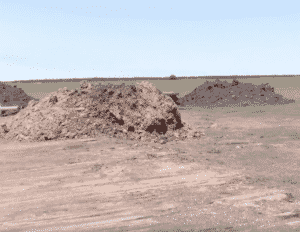How Pipelines Are Constructed ? Here’s the Video Answer
In the video below, Condemnation Rights Attorney Philip Hundl answers the question — “how are pipelines constructed”. He refers to an animation from Kinder Morgan, and that animation is below. If you’re a Texas property owner faced with condemnation of your property, call for an appointment with Mr. Hundl at 800-266-4870. You can also click this link to ask for a free case evaluation.
Summary of the “How Are Pipelines Constructed” Video
– My name is Philip Hundl. I’m an attorney with Land Rights Law. My practice focuses on land litigation, often representing landowners in condemnation matters.
I’ve been asked by landowners about the specifics of the engineering or the steps involved with the installation of a pipeline when their property is being affected by a pipeline project. I think sometimes it’s easier to visualize things than to try to just explain it with words. So I’ve found some helpful videos online that are actually put out by the pipeline companies that I think will help illustrate the process and the steps involved with a pipeline project.

One that I found is by Kinder Morgan. We’ve got several ongoing Kinder Morgan projects right now, and we represent landowners facing condemnation related to those projects.
In the video below, Kinder Morgan lays out the multiple steps involved with acquiring the right of way, surveying the right of way, and then installing the pipe. They go into multiple steps.
When you’re visiting with the engineering departments of different companies, they’ll talk about maybe 14 steps, and not 10 steps, or 15 steps. It just depends from company to company.
How Are Pipelines Constructed – Preliminary Steps
But in general terms as explained in the Kinder Morgan video below, they’ve got the preliminary surveying and staking of the proposed right of way area. Then the clearing of the right of way area. And the next removing the trees, brush, things like that.
In our easement agreements, we try to address what’s going to happen with the trees that are removed? What’s going to happen with the debris? Is it going to be burned on site? Or is it going to be removed completely?
Then the right of way topsoil will be stripped away or segregated out. It’s really important to keep the topsoil segregated from the subsoil. Obviously different compositions of soil need to be kept separate. And you want to make sure that that topsoil gets returned back to the top of the right of way area so that the restoration will be successful.
How Are Pipelines Constructed – the Construction Process
Then going off of the Kinder Morgan animation, the re-staking of the center line for the trench to make sure that once the digging begins it will be in the correct location. Then the trenching happens. Depending on the composition of the subsoil, it can be done with a track hoe, or backhoe, or if it’s very rocky, with a trencher. Once the trenching is complete, there may be some padding installed at the bottom of the trench if it’s very rocky.
And the next step is the stringing of the pipe or laying of the pipe along the trench. You’ll see this at project sites. It’s very visible. You’ll see the stringing of the green-coated pipe along the, along the trench.
Then if there’s any bending that needs to happen in the pipe, it can be done in the field. If it’s more complex bending it’ll be done offsite. And then the welding. The initial and final welding of the strings of pipe will be done once again along the trench.
Once the pipe is then laid into the trench, the location of the trench will be further recorded with GPS recording so that the location of the pipeline will be precise. Extremely important.
We talked about the welding of the pipe together — the strings of pipe. Once the pipe is welded, the welds will be inspected. An x-ray inspection of the welds will be completed to make sure that the welds are properly done.
And then the welds are coated. Those welds will also be coated with a protective coating. So once that’s done the pipe’s welded together, the welds are coated, then the pipe will be lowered into the trench by a side boom equipment.
Then the trench will be back filled. How this is done is extremely important. We have this in our easement agreements. We want to make sure that it’s properly back filled, subsoil first and then the topsoil on top.
Then the pipeline is hydrostatically tested. Water is pumped into the pipe at high pressures to make sure that there’s no failure in any of the welds. No leaks.
How Are Pipelines Constructed — Restoration
And then once the topsoil is replaced, if there’s any sinkage, you know, more topsoil will be replaced. The top of the trench will be leveled multiple times to attempt to prevent substantial sinkage over the pipeline.
And then the other restoration procedures will be completed by the pipeline company, such as reseeding with the particular type of pasture that was there before the pipeline project began.
So this is an interesting and informative video animation. I think it’s helpful. So please take a look.
Is Your Property Affected by Eminent Domain?
In our experience many landowners take the first offer they receive from a right of way agent. Remember the right of way agent works for the company acquiring your property rights and the agent’s goal is to do the job at the lowest cost. Protect yourself by talking with an attorney who’s experienced in property condemnation. If we can help you, please call Attorney Philip Hundl for an appointment at 800-266-4870. You can also ask for a free case evaluation by clicking this link.
Call 800-266-4870 or text 979-320-9320 for an appointment. We can also arrange for online and telephone appointments all over Texas.